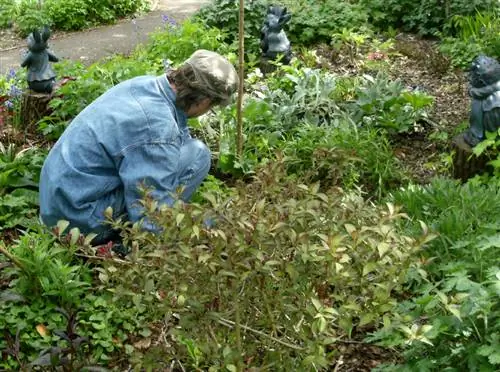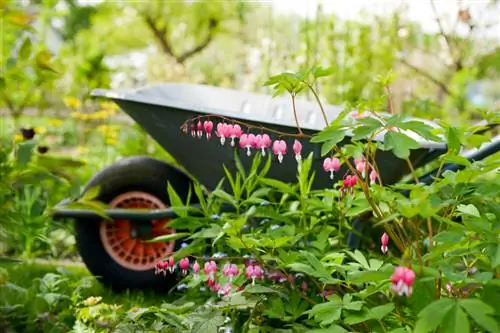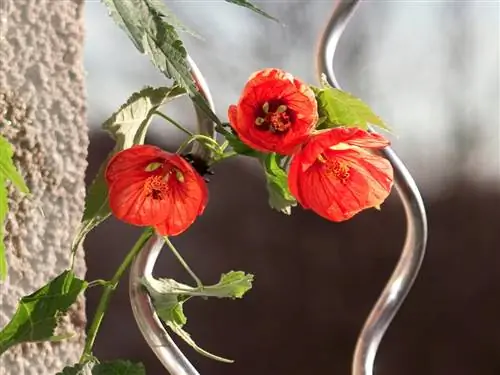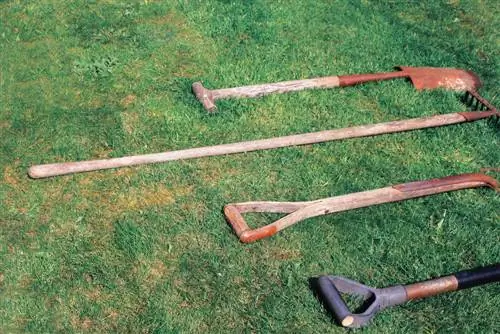- Author admin [email protected].
- Public 2023-12-16 16:46.
- Last modified 2025-01-23 11:20.
The Bleeding Heart is an eye-catcher, no question! The perennial, up to 120 centimeters high, with its eye-catching flowers and no less beautiful, feathery leaves, looks most beautiful when planted in dense groups. For this purpose, the bleeding heart is quite easy to propagate - you just have to divide the rapidly growing plant regularly.
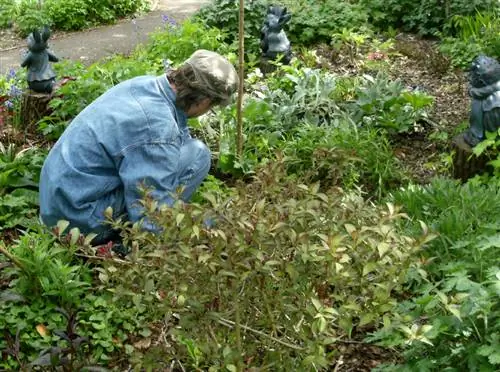
How can a bleeding heart be divided and multiplied?
The bleeding heart can be divided in the spring before budding or after flowering in July/August by carefully digging up the rhizome and dividing it with a sharp tool. Another method is propagation by root cuttings in winter.
Share Bleeding Heart
There are two possible, equally suitable times for dividing the plant. The bleeding heart can be easily divided both in early spring, before budding, and in July/August directly after flowering. It is best to take the measure on an overcast day, as heat and strong sunlight weaken the plant, which is native to the mountain forests of Northeast Asia.
- Carefully dig up the entire perennial using a digging fork.
- Try to dig out as many roots as possible and damage as few as possible.
- Carefully shake off the adhering soil.
- Divide the rhizome using a spade or a sharp knife.
- The tool should be clean and sharp.
- The individual sections consist of at least one shoot with strong roots on it.
- The young plants can be planted immediately in the predetermined place outdoors.
- Make sure to protect the plant from frost, especially when dividing in spring.
Propagation by root cuttings
In winter, the bleeding heart can also be propagated very well using root cuttings.
- Carefully expose the roots on a frost-free day in late fall or winter.
- Cut off relatively thick pieces, about three to five centimeters long.
- Clean the adhering soil.
- Plant the root cuttings horizontally in a planting bowl.
- This contains a moist sand-peat mixture.
- Overwinter the root cuttings frost-free.
- In spring, the rooted cuttings can be planted in their final location.
Plant root cuttings directly
The root cuttings can also be planted directly into the garden. However, both the rooting and the growth of the young plants are significantly slower in this case. Always make sure to protect young shoots from late frosts, for example with a warm cover.
Tip
The young plants should be watered regularly both when planting and shortly afterwards. Moisture helps them to root, but waterlogging should be avoided.

